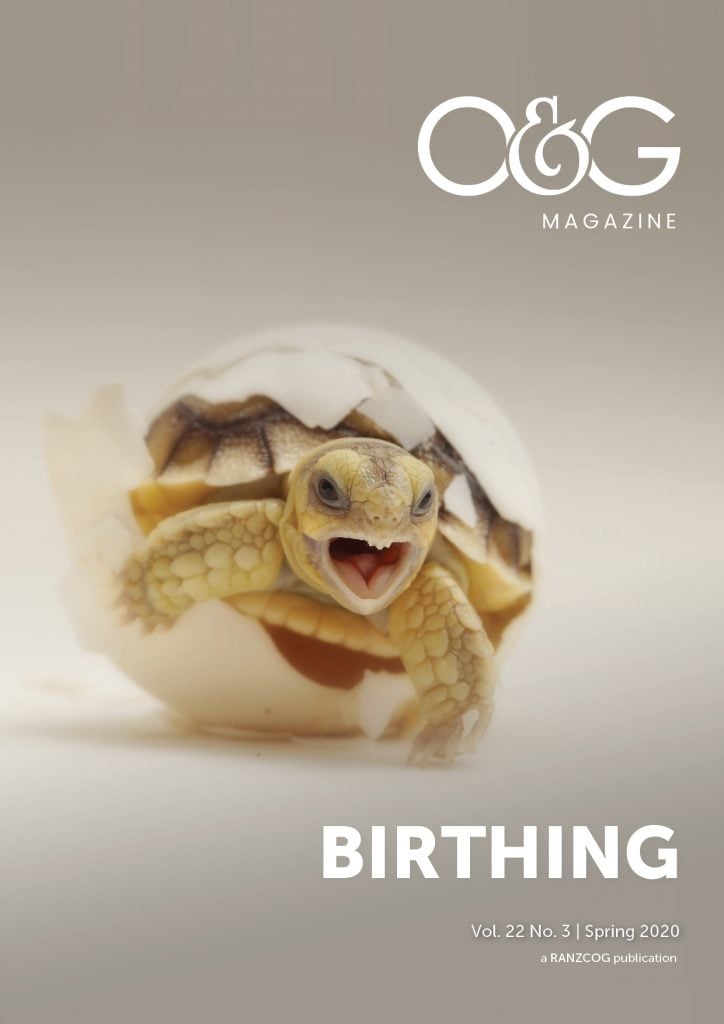There are few experiences that unite all people irrespective of age, gender, wealth or ethnicity, but we have all played a central role in at least one birth. In hospital or at home, by caesarean or vaginally, planned or spontaneous, attended by midwives, doctors, family members – every person reading this magazine has emerged into the world, taken their first breath and begun life separated from their mother.
There is no correct way to give birth, and women and their carers prioritise different aspects of their birth experience and make their own decisions. In my case, I am a white male specialist obstetrician. I practice primarily in a healthy population in private and public hospitals. I do provide vaginal birth after caesarean and vaginal birth of twins where appropriate. I don’t perform vaginal breech delivery of singletons and I don’t attend births outside of a hospital setting. I endeavour to provide a respectful woman-centred birth experience; my over-riding priority is the safety of the mother and baby. Like all of us, my practice is informed by my location, training, personal beliefs and the beliefs and desires of the people for whom I care. This issue of O&G Magazine has the single theme of birthing, but in reality, there is no single template that will work for all women in all circumstances. Reading these articles prior to publication, I found that many informed me of the context of birth across Australia and New Zealand and different approaches to achieve the best outcome for mother and baby.
Where a woman gives birth and who she is attended by is a discussion of primary importance. This issue contains articles regarding the organisation and outcome of maternity care in New Zealand, the drive towards ‘Birthing on Country’ for First Nations Australian women, and the current experience of homebirth in Australia and New Zealand. Regardless of birth location or choice of attendant, the question of consent to birth and the practices around birth is faced by all women and their practitioners. The article by Holbeach et al discusses the issue of consent around childbirth and highlights the utility of having these discussions prior to labour.
This issue also provides a number of up-to-date reviews of areas of interest in obstetrics. In the context in which I practice, the articles on pregnancy in women of advanced maternal age and the timing and methods of induction of labour highlight changes in my clinical practice over the last decade. The ideal timing of delivery, and hence induction of labour, a topic brought into sharper relief following the publication of the ARRIVE trial, has also altered practice in many contexts and is relevant to all readers. A similarly emergent practice is physiological or ‘delayed’ cord clamping, I would encourage all readers to review the article on this topic which provides an excellent account of the physiological changes at this crucial transition. The reviews of cardiac disease in pregnancy and pain relief in labour provide accessible updates of these areas, while the article on fetal monitoring in labour highlights current developments in this field. Obstetricians and other birth attendants must also possess skills to offer assistance to a birthing woman when required. We have included articles on both twin births and instrumental delivery, and accounts of both the response to common obstetric emergencies and the various obstetric emergency training courses available in Australia and New Zealand.
We have the good fortune to spend our working lives caring for women and their babies at what can be the most joyous, but also one of the most dangerous, moments of their life. We should strive to respect their choices, and use our knowledge, skills and empathy to help them be safe and empowered. Read this issue of O&G Magazine and even the most experienced obstetrician will find something new to help them in their quest.






Leave a Reply